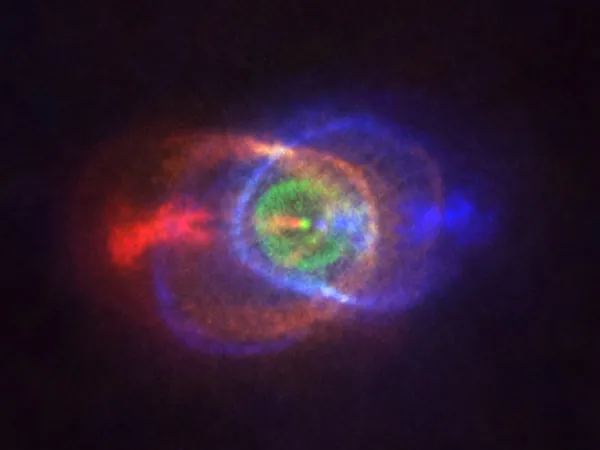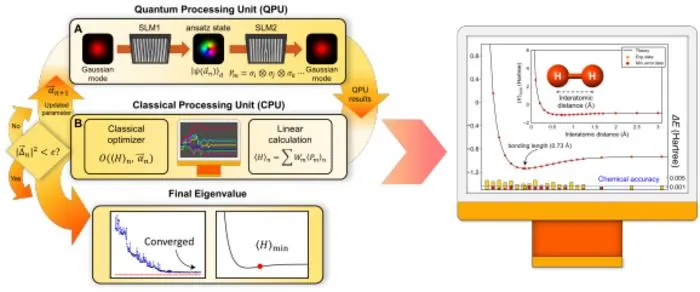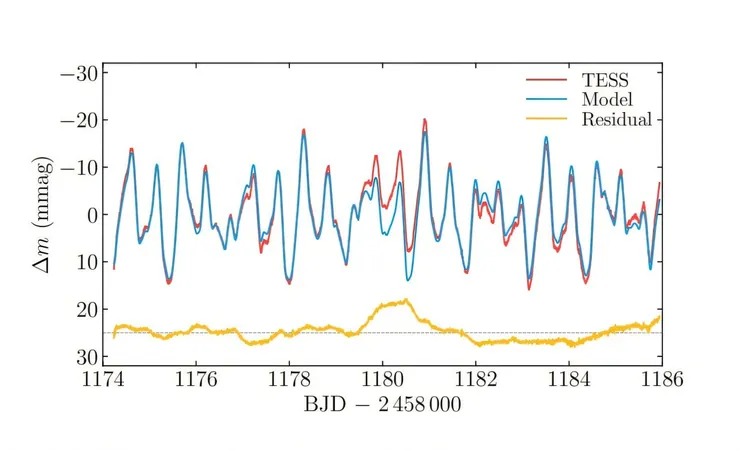
Astronomers Uncover the Secrets of Stellar Evolution with Rare White Dwarf-Main Sequence Binaries
2024-11-19
Author: Jacob
Introduction
In a groundbreaking discovery, astronomers from the University of Toronto have identified the first-ever pairs of white dwarfs and main sequence stars in young star clusters. This exciting research, detailed in a recent study published in The Astrophysical Journal, shines new light on one of the most puzzling chapters of stellar evolution—a critical process that holds clues to the life cycles of stars and the formation of galaxies.
Binary Systems and Stellar Evolution
By observing these extraordinary binary systems—where two stars orbit a shared center of mass—scientists can unravel the mysteries of how stars are born and die. Most stars, including those similar to our sun, exist in binaries, and nearly half of them have at least one companion star. However, the stark differences in mass between these stars imply varying life spans and evolutionary timelines. More massive stars tend to burn out quickly, undergoing rapid transformations compared to their less massive counterparts.
As stars near the end of their life cycles, they expand tremendously during the red giant phase, sometimes engulfing their companions in the process—a phenomenon known as the common envelope phase. This phase is deeply mysterious and crucial to understanding what happens to stars in close proximity. The recent findings help bridge the gap in our comprehension of the evolutionary trajectory following this phase, providing essential data for studies of cosmic events like supernovae and gravitational waves, which are theorized to arise from binaries featuring one or more white dwarfs.
Importance of the Discovery
Lead author Steffani Grondin, a graduate student in the David A. Dunlap Department of Astronomy & Astrophysics at U of T, emphasized the importance of these binaries: "They play a pivotal role in our universe. This work represents a significant step forward in tracing the full life cycles of binary systems and will hopefully help demystify this enigmatic phase of stellar evolution."
Methodology
To make this discovery, researchers leveraged machine learning algorithms to analyze extensive data from the European Space Agency's Gaia mission, which has cataloged information on over a billion stars. By integrating this data with results from the 2MASS and Pan-STARRS1 surveys, the researchers identified clear signatures of these binary systems in star clusters that had similar characteristics to known white dwarf-main sequence pairs.
Expanding the Known Candidates
Before this study, only two candidates had been identified within clusters; however, this research could potentially expand the known number to as many as 52 binaries across 38 star clusters.
Significance of Machine Learning
The clustered nature of these stars suggests they formed at roughly the same time, allowing astronomers to better estimate their ages and fully trace their evolutionary paths—from the initial conditions of the common envelope phase to their current states as binaries.
Co-author Joshua Speagle, a professor in both the David A. Dunlap Department for Astronomy & Astrophysics and the Department of Statistical Sciences at U of T, noted the significance of employing machine learning in their research: "This technology enabled us to automate our search across hundreds of clusters—a feat that would have been virtually impossible without it.”
Future Implications
Maria Drout, another co-author and professor in the same department, remarked on the implications of such discoveries: "It showcases just how much remains undiscovered in our vast universe, highlighting the potential for finding new systems. These findings will significantly enhance our understanding of various facets of astrophysics."
As the quest to comprehend stellar evolution continues, this discovery presents astronomers with formidable opportunities to explore the cosmic landscape, leading to potentially groundbreaking revelations about the universe and our place within it.









 Brasil (PT)
Brasil (PT)
 Canada (EN)
Canada (EN)
 Chile (ES)
Chile (ES)
 España (ES)
España (ES)
 France (FR)
France (FR)
 Hong Kong (EN)
Hong Kong (EN)
 Italia (IT)
Italia (IT)
 日本 (JA)
日本 (JA)
 Magyarország (HU)
Magyarország (HU)
 Norge (NO)
Norge (NO)
 Polska (PL)
Polska (PL)
 Schweiz (DE)
Schweiz (DE)
 Singapore (EN)
Singapore (EN)
 Sverige (SV)
Sverige (SV)
 Suomi (FI)
Suomi (FI)
 Türkiye (TR)
Türkiye (TR)